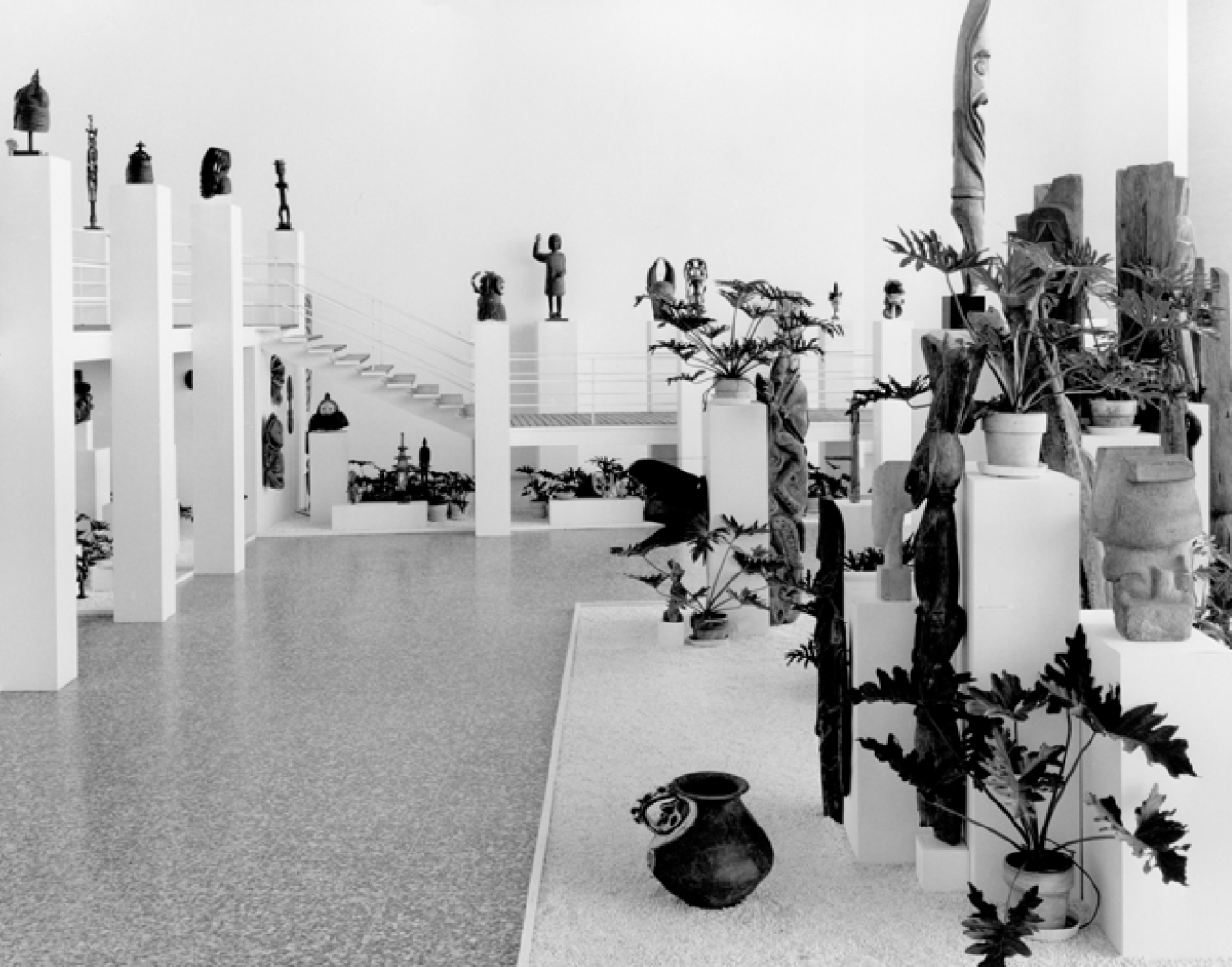15 April 2025
10:00 AM EST / 4:00 PM CET
Jermayne MacAgy:
PAMELA BIANCHI
École Nationale Supérieure d’Architecture de Paris-Belleville
Respondent: Ekin Pınar, Middle East Technical University
![]()
Exhibition view, Totems Not Taboo. An Exhibition of Primitive Art, curated by Jermayne MacAgy, February 26-March 29, 1959, Cullinan Hall at Museum of Fine Arts, Houston.
Jermayne MacAgy became the director of the Contemporary Arts Association in Houston in 1955 after having been for the previous 14 years at the California Palace of the Legion of Honor in San Francisco as curator and acting director. 10:00 AM EST / 4:00 PM CET
Jermayne MacAgy:
Shaping Knowledge Through Space
PAMELA BIANCHI
École Nationale Supérieure d’Architecture de Paris-Belleville
Respondent: Ekin Pınar, Middle East Technical University

Exhibition view, Totems Not Taboo. An Exhibition of Primitive Art, curated by Jermayne MacAgy, February 26-March 29, 1959, Cullinan Hall at Museum of Fine Arts, Houston.
During her four-year tenure, she organized twenty-nine exhibitions that all translated her innovative understanding of museum layout and architecture. “Pioneering curator of modern art […] who managed to ignore design systems — or tried to work outside of systems of taste” (Hopps 2008: 22-24), MacAgy suggested a new comprehension of art history through aninnovative display set-up. Together with Alfred Barr, she was a student of Paul J. Sachs in his training program for art museums at Harvard University. Active in the mid-twentieth century, when, especially in America, a distinct museum and curatorial approach was being defined thanks to the contribution of the de Menils and the Arensbergs, MacAgy embodied the desire of the time to free art and architectural processes from univocal images, formal representations and contemplative acts, proposing a more interdisciplinary idea of creation attentive to the phenomenological experience.
MacAgy called into question the status of the artefact and the common object which she both understood as mnemonic signs of a shared cultural heritage, thus anticipating the topics that would be later developed by Szeeman’s a-historical approach or by the curatorship of Rudi Fuchs and William Rubin. Fostering defamiliarized contexts and settings and understanding the display as a significant gesture meant to mean, she used potted plants, gravel and claybeds, temporary fabric, structural mobile walls and pedestals of different sizes to dramatize the exhibition space.
Yet, today, her work is still unknown to many. Apart from the archives of the Menil Collection inHouston, very little literature from the mid-century exists. No comprehensive historiographical study has been conducted on her work other than a catalogue in 1968, which, however, does not offer any precise critical-analytical study. Consequently, the paper aims to deepen a historical-critical study to inscribe her work into the contemporary debate and eventually start a process of historicization of the central contribution she was able to instil in the museographysystem of the time.
***
Between Idea and Building:
Art, Architecture, and Identity in the Whitney Museum of American Art
LAUREN MCQUISTION
University of Virginia
Respondent: Özgür Esra Kahveci,
Istanbul Technical University

View of Marcel Breuer designed Whitney Museum of American Art (1966).
Image by Lauren McQuistion (2022).
Museums are canonizing machines. As an institutional typology associated with the production of cultural knowledge, museums use their architecture to project institutional authority and permanence in support of activities constructing narratives of shared cultural history. Since its formalization as a museum in New York City in 1930, the Whitney Museum of American Art’s mission has been dedicated to the institutionalization of works by living, American artists. While this priority has acted as a guiding principle, it is also a highly mutable concept which has manifested itself most visibly in the relationship between the Whitney and its architecture. Unlike other museums that have renovated, expanded, and, in some rare cases, demolished and rebuilt architecture, the Whitney has relocated multiple times, using radically contrasting architectural interventions to reinvent itself institutionally.
Each architectural iteration of the Whitney has marked a moment of solidified relations between the museum as an institution, the possibilities for the exhibition and reception of American Art, and the experience of the Whitney by its publics. This position ultimately contradicts the museum’s stated notion that “the Whitney is an idea, not a building”, a bifurcation between the concept of the museum and the museum’s architectural expression that has ultimately had significant consequences for the Whitney’s institutional authority, successes, and critiques over the course of its history.
The Whitney’s architecture does not stand alone as an object of history but is instead a significant component of a still emerging assemblage of people, practices, and objects. The institution cannot be understood without its architecture and vice versa, posing questions regarding the intersection of spatiality and the practices of curating, preserving, and presenting American Art, and by extension, architecture’s role in the formation of “American” cultural identity represented through these processes and facilitated by institutional spaces.